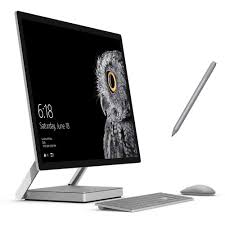
The Evolution of Microsoft Desktop
Microsoft has been a dominant player in the desktop computing industry for decades, shaping the way people work and interact with technology. From the early days of MS-DOS to the latest versions of Windows, Microsoft’s desktop operating systems have evolved significantly over time.
One of the key milestones in Microsoft’s desktop history was the release of Windows 95 in 1995. This groundbreaking operating system introduced a graphical user interface that revolutionized the way users interacted with their computers. Windows 95 was followed by several other successful releases, including Windows XP, Windows 7, and the more recent Windows 10.
Microsoft has not only focused on improving the user interface and user experience but also on enhancing security and performance. Features such as built-in antivirus software, automatic updates, and virtual desktops have been introduced to make Windows more secure and efficient for users.
With the rise of mobile computing, Microsoft has also expanded its desktop offerings to include hybrid devices like the Surface Pro, which combine the power of a laptop with the portability of a tablet. This move reflects Microsoft’s commitment to adapting to changing technology trends and meeting the needs of modern users.
In conclusion, Microsoft’s desktop products have come a long way since the early days of MS-DOS. The evolution of Microsoft desktop operating systems has been marked by innovation, improved functionality, and a focus on user experience. As technology continues to advance, we can expect Microsoft to continue leading the way in desktop computing.
5 Essential Tips to Optimize Your Microsoft Desktop Experience
- Organize your desktop by creating folders to group similar files together.
- Customize your desktop background with a personal photo or a favorite image.
- Use desktop shortcuts for quick access to frequently used programs or files.
- Regularly clean up unused icons and files from your desktop to improve performance.
- Utilize virtual desktops in Windows 10 to keep different tasks separated and organized.
Organize your desktop by creating folders to group similar files together.
Organize your desktop efficiently by creating folders to group similar files together. This simple yet effective tip can help you declutter your desktop and make it easier to find the files you need quickly. By categorizing your files into folders based on their type or purpose, you can streamline your workflow and improve overall productivity. Keeping a well-organized desktop not only enhances visual appeal but also promotes a more structured approach to managing your digital workspace.
Customize your desktop background with a personal photo or a favorite image.
Customizing your desktop background with a personal photo or a favorite image is a great way to personalize your Microsoft desktop experience. By choosing an image that resonates with you, whether it’s a cherished memory, a stunning landscape, or a piece of art you love, you can create a visually appealing and inspiring workspace. This simple tip not only adds a touch of personality to your desktop but also helps make your computer feel more like your own space, enhancing overall enjoyment and productivity while using it.
Use desktop shortcuts for quick access to frequently used programs or files.
Utilizing desktop shortcuts on your Microsoft desktop can greatly enhance your productivity by providing quick access to frequently used programs or files. By placing shortcuts on your desktop, you can easily launch applications or open documents with just a single click, saving you time and streamlining your workflow. Organizing your desktop shortcuts in a logical manner can help you stay organized and efficiently navigate through your most commonly accessed items. This simple tip can make a significant difference in how efficiently you work on your Microsoft desktop.
Regularly clean up unused icons and files from your desktop to improve performance.
Regularly cleaning up unused icons and files from your desktop is a simple yet effective tip to improve the performance of your Microsoft desktop. By decluttering your desktop, you can reduce the load on your system resources, which can lead to faster boot times and smoother overall performance. Removing unnecessary files and shortcuts not only streamlines your desktop interface but also helps optimize system resources for tasks that matter. It’s a good practice to organize and manage your desktop regularly to maintain a clean and efficient workspace on your Microsoft desktop.
Utilize virtual desktops in Windows 10 to keep different tasks separated and organized.
To enhance productivity and organization on your Windows 10 desktop, consider utilizing virtual desktops. This feature allows you to create separate desktop spaces for different tasks, keeping them neatly organized and easily accessible. By using virtual desktops, you can switch between work-related projects, personal tasks, or entertainment activities with ease, without cluttering your main desktop space. This can help streamline your workflow and improve focus by keeping related tasks separated and reducing distractions.
